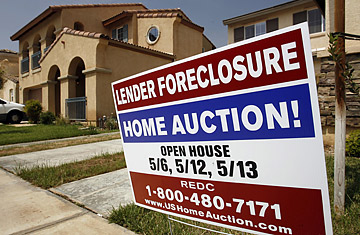
Some 18% of mortgage holders nationwide owe more than their house is worth, according to data aggregator First American CoreLogic. That hurts struggling homeowners, and perpetuates the cycle of foreclosure. Not only can those homeowners not refinance their way out of trouble, but they also can't rely on the old-fashioned solution of simply selling the house: the cash they would get won't, in many cases, cover the balance of their loan.
The problem with short-term solutions to home price declines is that they're not necessarily the best long-term answers for stabilizing the housing market. Take, for example, the idea of a temporary moratorium on foreclosures. That would help restrain inventory, and, ostensibly, help drive up home prices in an area as the supply of homes began to better match the demand. Foreclosed homes also often sell for less, which means getting them off the market boosts pricing power in a second way. But there can also be a downside: a recent study by the St. Louis Fed found that foreclosure moratoriums during the Great Depression caused banks to cut back on lending and raise mortgage rates since in a default they wouldn't be able to seize the house.
And there's another reason why a foreclosure ban could gum up the process of a housing correction: As harsh as it sounds, some people should lose their homes. Arguably what we need is to find the country's natural rate of homeownership — one not manipulated by unreasonable and predatory lending standards. Any effort to tinker with that may delay the consequences of foreclosures, but not get rid of them. "There's a group of people who aren't ready to buy, and that's a fine thing to be," says Joseph Mason, a housing expert and professor of banking at Louisiana State University. "It's not a market failure." Compassion might be better directed to the aftermath of a foreclosure — housing needs, counseling, financial guidance, etc. — where it can really do some good.